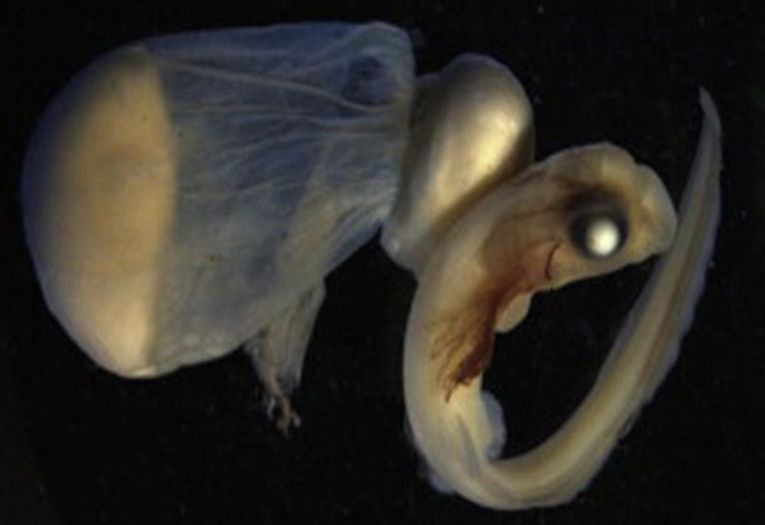The north of Scotland is well-known for violent weather and cold mountainous vistas of island and mainland. Now its coral reef off Mingulay could become as famous as once the Mingulay boat song was. The obvious question is how can an inshore coral reef exist so far north? The answer is that the unusual cold-water coral, Lophelia pertusa, can grow in the Atlantic as far as the Norwegian Lofoten Islands, where it forms ancient giant formations up to 35m high. The vertebrate niches associated with the coral are those of conger eels, several sharks, and hake.
The invertebrate community consists of brittle stars, molluscs, amphipods and crabs. The Lophelia genus is also found in the Pacific and Indian Oceans. Heriot Watt University in Edinburgh found it in the Minch in the Hebrides, and have now come up (literally) with a deep-water shark nursery there. Dr Lea-Anne Henry, of Heriot-Watt University, reveals that, "It's very exciting to find these spawning sites, as there's still relatively little information about deep-sea sharks' habitat across their life cycles."
She and her colleagues have written a paper in the journal, Biological Conservation, as "Cold-water coral reef habitats benefit recreationally valuable sharks." They hope the attraction of more line fishermen to the reefs will prevent damage to the reefs, as Greenpeace have noted in the Lofoten Islands. Balancing conservation with economics is always the problem for Western European marine sites where oil and gas exploration tends to try and gain precedence.
Galeus melastomus, the blackmouth catshark is a well-known and striking fish, sought by anglers, who have caught it in Scotland for many years. These sportsmen put back the caught animals and so maintain records of age, size and date. The young are hatched in the rich coral habitat at around 400m, we believe. While they are common sharks, the blackmouths seem likely to become responsible for preserving the reefs by being a "sporting fish."










